SPOTLIGHT
Khayelitsha District Hospital, 10 years of making it work
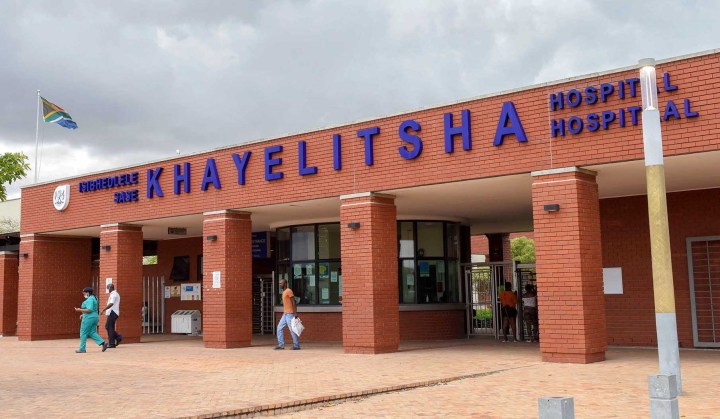
This month the Khayelitsha District Hospital celebrates 10 years since it opened. Tiyese Jeranji paid a visit and spoke to the CEO, staff, patients and health stakeholders about the services the hospital provides, its successes and continuing challenges.
Entering the Khayelitsha District Hospital one is still met by that “new hospital feel” despite its 10th anniversary coming up in April. Floors are shiny, all the wood finishes are still intact and polished, walls are adorned with neat health posters and eye-catching murals, and there is light – lots of natural light. The colourful plastic waiting benches feature modern, hip designs. The green of indigenous plants jumps out from a courtyard hemmed with mosaic tiles. On the face of it, the wear and tear often seen at older public hospitals have not yet set in.
But it has at times been a bumpy ride since the hospital officially opened in April 2012. In 2018, it made headlines when patients reportedly had to sleep on the floor due to a shortage of beds. In recent years it has been under close scrutiny from the provincial legislature, to which hospital management and the provincial health department most recently had to report in February.
Massive need
Hospital CEO David Binza suggests that the hospital’s difficulties are mostly due to population growth in the area outstripping the hospital’s resources. When the hospital opened Stats SA put the population of Khayelitsha at just more than 391,000 in the last census.
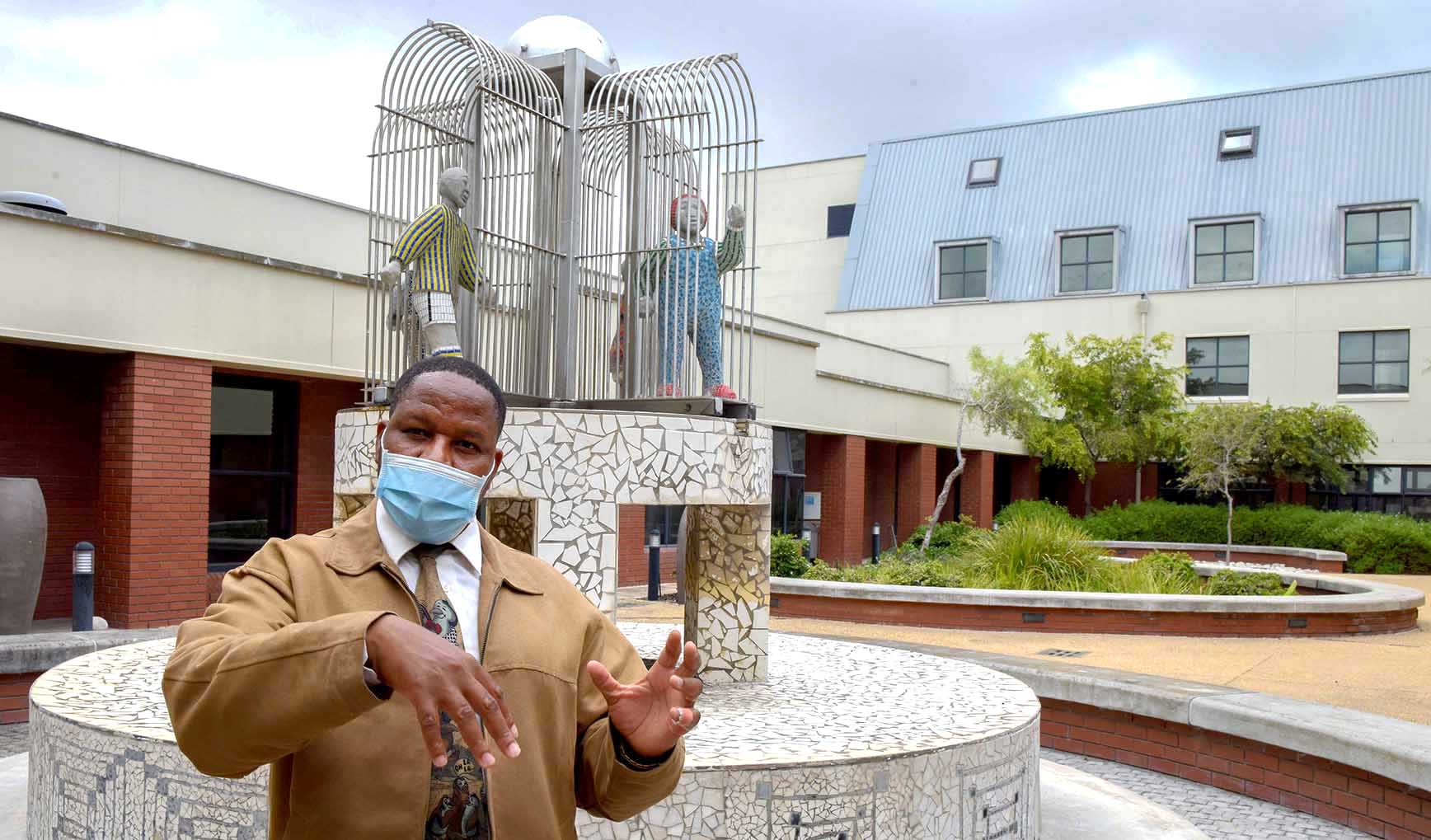
Khayelitsha District Hospital CEO David Binza. (Photo: Nasief Manie / Spotlight)
Back in 2018, Dr Gio Perez, chief director for metro health services, said in the Western Cape parliament that based on the census data of 2011, it was estimated that Khayelitsha’s population was 391,749. “The figures given by the census are the official Stats SA figures. If they extended the population to today (2018), it is estimated the population has grown just under 500,000 people. However, these numbers are hotly disputed in some circles. The population quoted in the media ranges from 500,000 to 1.5 million people in 2018.”
In a circular from the Western Cape health department, the official population estimate for Khayelitsha by 2022 is 451,616.
Still, while the population size might be disputed, Binza says there is a definite increase in the number of patients they have to attend to. “Yet there is not enough staff. We have a lot of pressure, especially in the trauma unit on weekends, month ends, or when there is a derby between Kaizer Chiefs and Orlando Pirates. We have our hands full and with limited resources. Most people who end up on the chairs or floors are in the trauma [unit].”
Nolitha Mazwayi, provincial manager of the Treatment Action Campaign (TAC), agrees that population growth has affected services at the hospital and contributed to overcrowding. The TAC’s provincial headquarters are in Khayelitsha.
“The hospital’s infrastructure cannot handle the patients that have to be serviced by the hospital,” she says. “Staff shortages affect service provision to patients.”
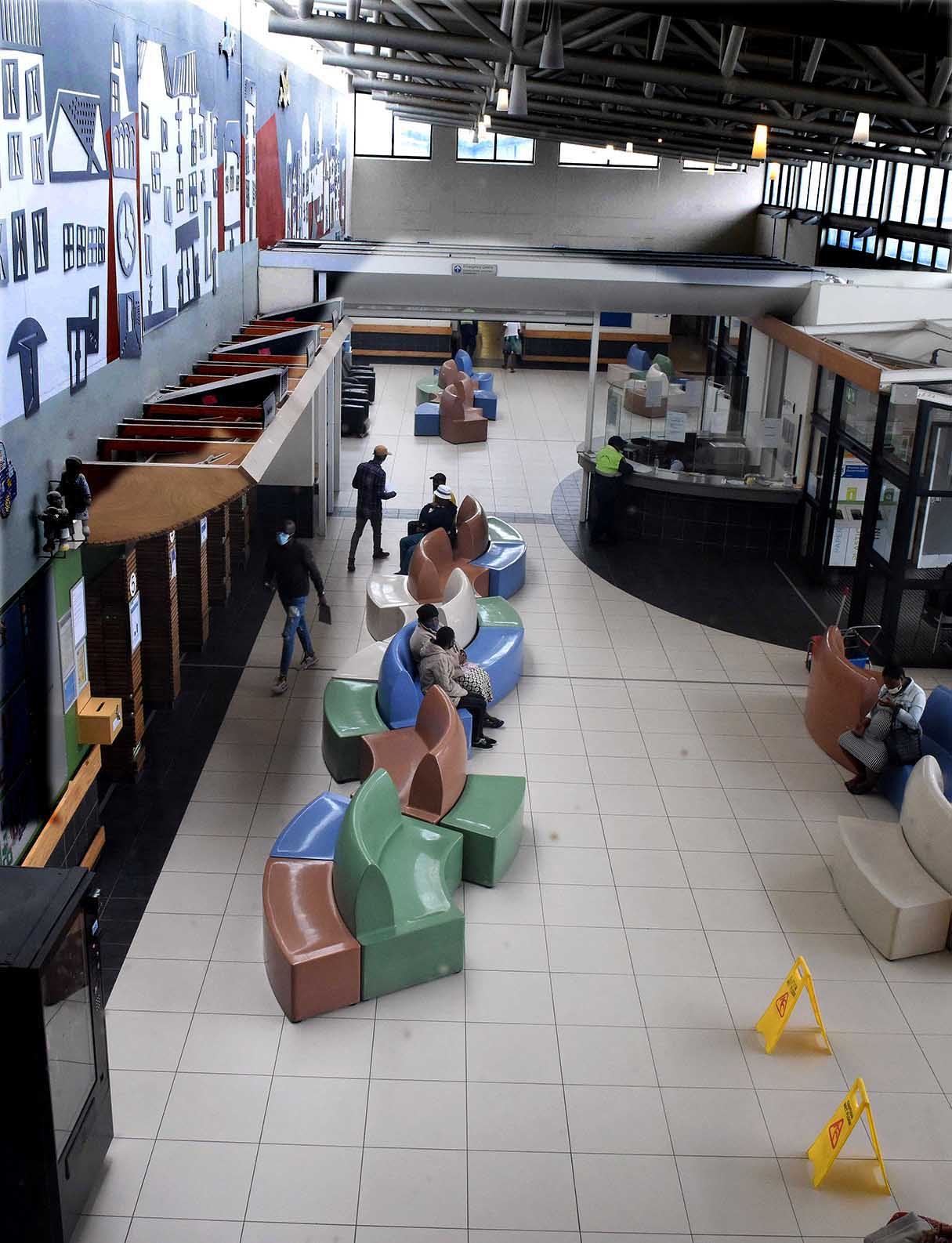
While the population size might be disputed, CEO David Binza says they have seen an increase in the number of patients, amid a staff shortage. (Photo: Nasief Manie / Spotlight)
Khayelitsha Health Forum chairperson Mzwanya Ndibongo also points the finger at population growth: “Now, with [the] area growing we have a lot of people and it has put so much pressure on the hospital. The main challenge is in the trauma unit and psychiatry. Due to not having enough beds, people end up sleeping on chairs and the floor. In other wards there is no problem.”
Staff shortages
The hospital has 650 staff members, just more than half of whom (336) are nursing staff, but Binza says this is not enough. He says they need an additional 18 speciality nurses, 55 professional nurses, 67 enrolled nurses and 106 enrolled nurse assistants.
Head of nursing Grace Mashaba says they plan daily for how to best use the nurses given the number of occupied beds. “We have to decide who do we move where and who do we discharge. At times we have to escalate patients but you find out that the ward is full to capacity [but] you have to admit a patient [so] what do you do? We improvise because we can’t chase patients away and some don’t want to be sent to other hospitals as it is far,” says Mashaba.
“We don’t even have enough cleaners or even porters,” says Binza, gesturing to a porter wheeling a patient. “Look, under normal circumstances we must have two porters with that patient but we only have one. So, this is a challenge. We need more porters, cleaners, clerks, scrubs and others. We can’t even do theatre time properly because there is not enough staff.”
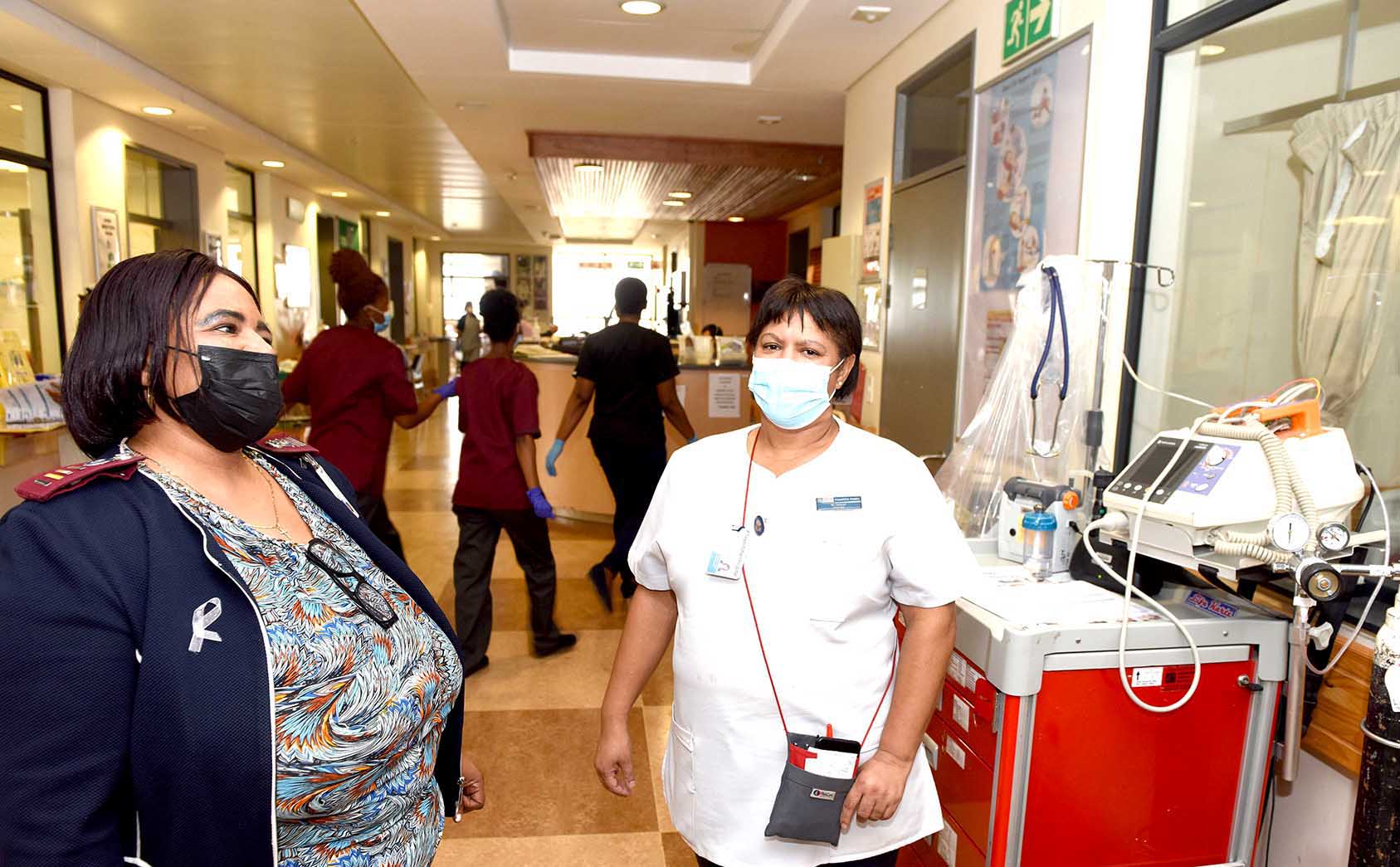
Head of nursing Grace Mashaba (left) and nurse Sharon Oliphant in Surgical Ward 1. (Photo: Nasief Manie / Spotlight)
Binza says they have a surgery backlog, which varies from service to service. The waiting list for a hysterectomy is about two months, 22 patients are waiting for a gastroscopy, 40 for a colonoscopy, and 20 for orthopaedics. “So, we end up relying on agency staff to do the work which sometimes causes tensions between our staff and the agents.”
Not enough beds
While most of the hospital’s challenges relate to staff shortages, bed capacity is also a problem. The official capacity is 340, but Binza says they often have to accommodate nearly 450 patients, which is why they sometimes end up sleeping on chairs or on the floor.
Adding to this pressure, people who could be helped at a clinic go straight to the hospital, he says. They needed to raise more community awareness and education around this. “This is a hurdle we need to still get over. Some patients come to the hospital instead of going to the clinic because they trust the hospital more or it’s just closer so they can walk there… We need to make the community aware of where they need to go for what services.”
New services
The pressure on the hospital is not only determined by the number of people who depend on it, but also by the healthcare needs of the specific population. Binza says Khayelitsha faces a quadruple burden of disease – violence, trauma and injury, mother and child health, communicable diseases such as TB and HIV, and non-communicable diseases such as hypertension and diabetes.
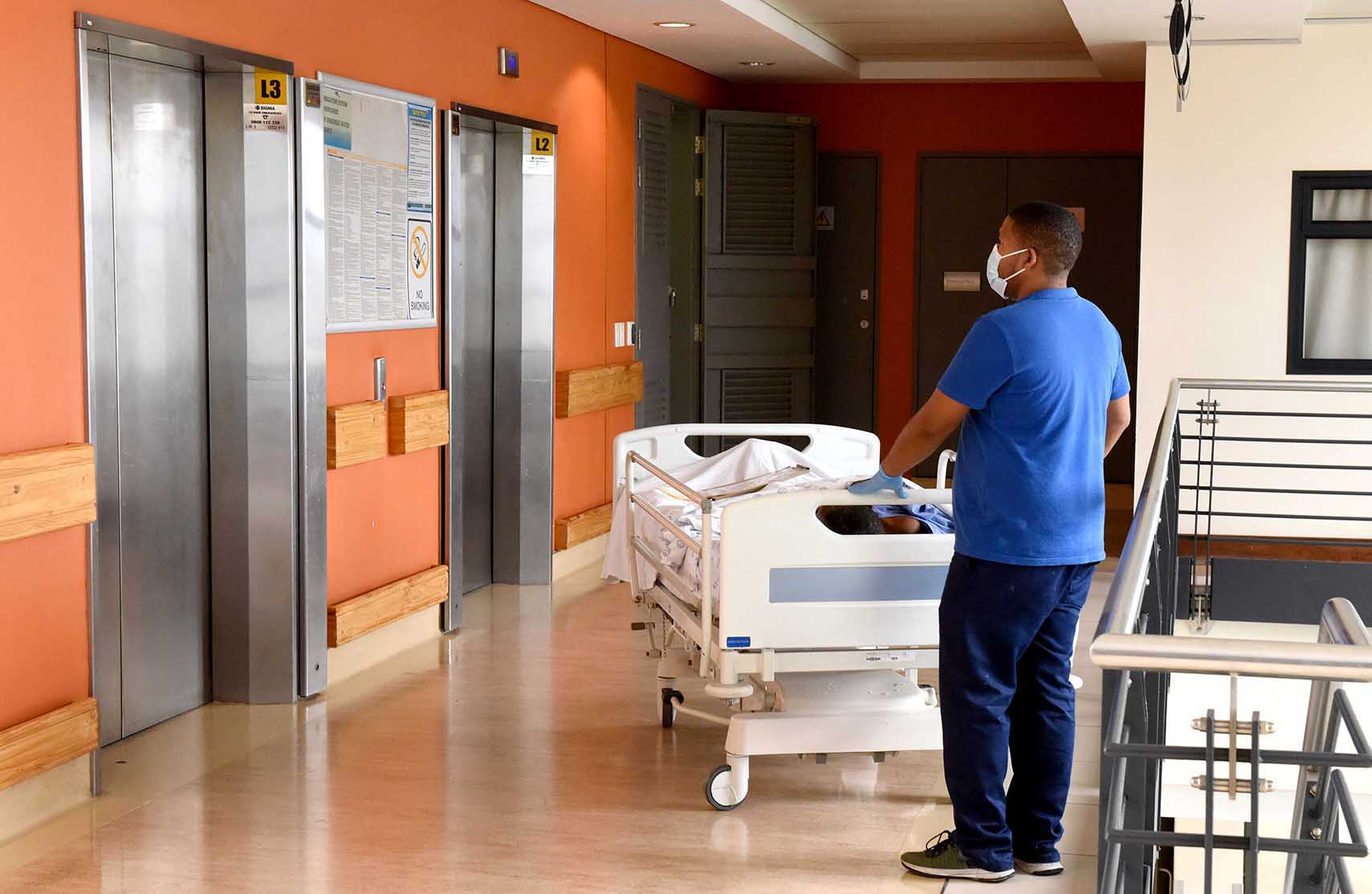
CEO David Binza says Khayelitsha District Hospital does not have enough cleaners or even porters. (Photo: Nasief Manie / Spotlight)
When it opened 10 years ago the hospital had six specialists, including three family physicians, one emergency physician, one obstetrician and one paediatrician. Now, serving a larger community with a high disease burden, Binza says they had to go back to the drawing board.
As a district hospital it receives referrals from and provides generalist support to clinics and community health centres, but the hospital also provides services that could be accessed at regional level. Today, there are 14 specialists who provide services including internal medicine, emergency services, surgery, orthopaedics, obstetrics, gynaecology, paediatrics, psychiatry and anaesthesiology. Binza says these services are meant to be offered at regional level by hospitals that receive referrals from and provide specialist support to a district hospital.
Among the expanded services they now provide, he emphasises the commissioning of the computerised tomography (CT) scanning service in 2017, the opening of an on-site blood bank in 2019, and the commissioning of overflow psychiatry beds at Lentegeur Hospital in 2021.
“Patients were going to Tygerberg Hospital and they had to be [put] on the waiting list. Having our own CT scan has helped us a lot. It also saves on transport costs and we are thankful for that. There are needed health services coming closer to the people,” says Ndibongo.
Money troubles
The staff shortages at the hospital appear to be largely down to funding. Binza says they have 222 principal posts, which are approved positions that have to be filled but due to financial constraints cannot be filled.
In the last financial year the hospital was allocated a budget of R430-million, but, Binza says, for it to function optimally they need an additional R150-million.
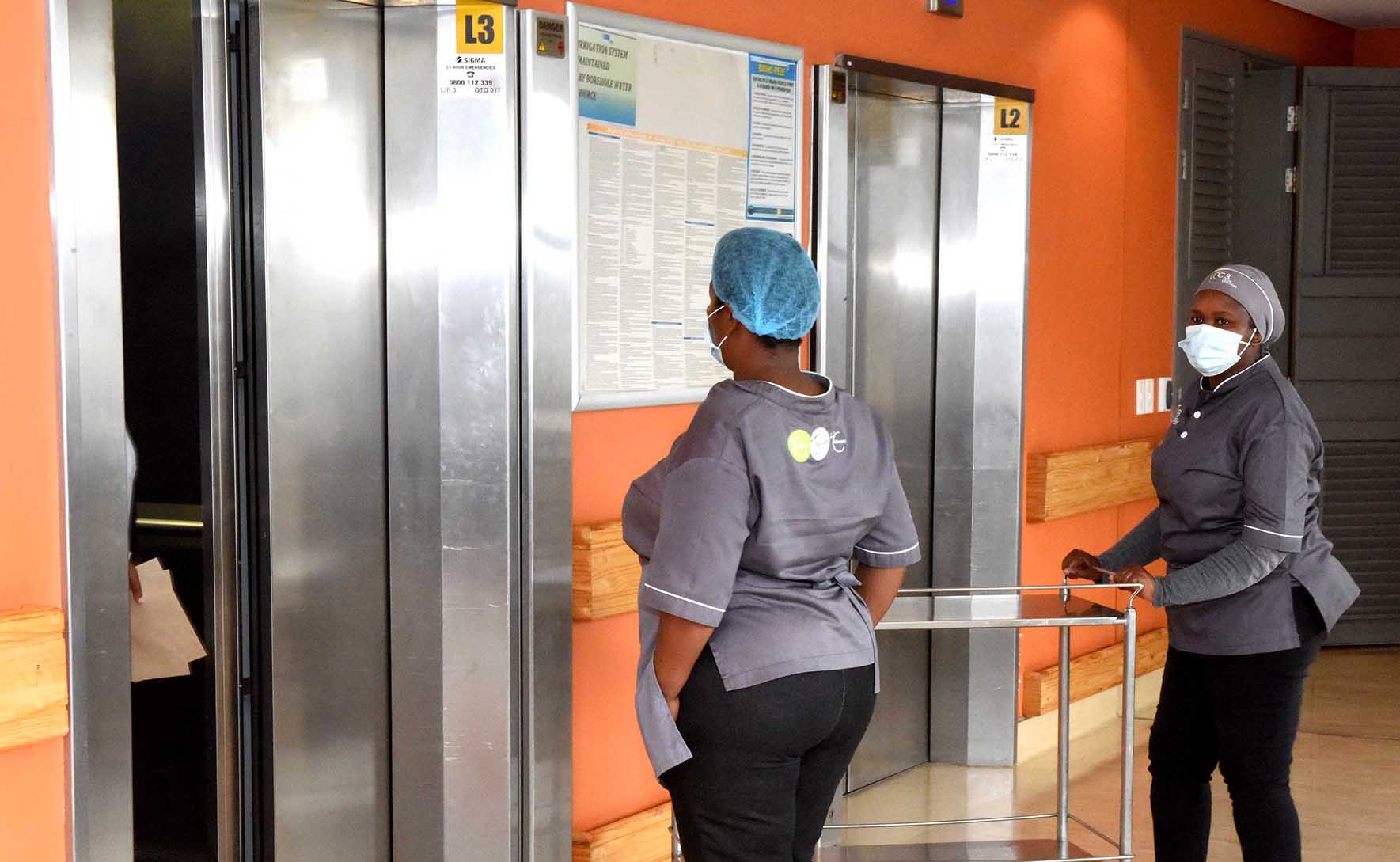
The hospital CEO says they need an additional 18 speciality nurses, 55 professional nurses, 67 enrolled nurses and 106 enrolled nurse assistants. (Photo: Nasief Manie / Spotlight)
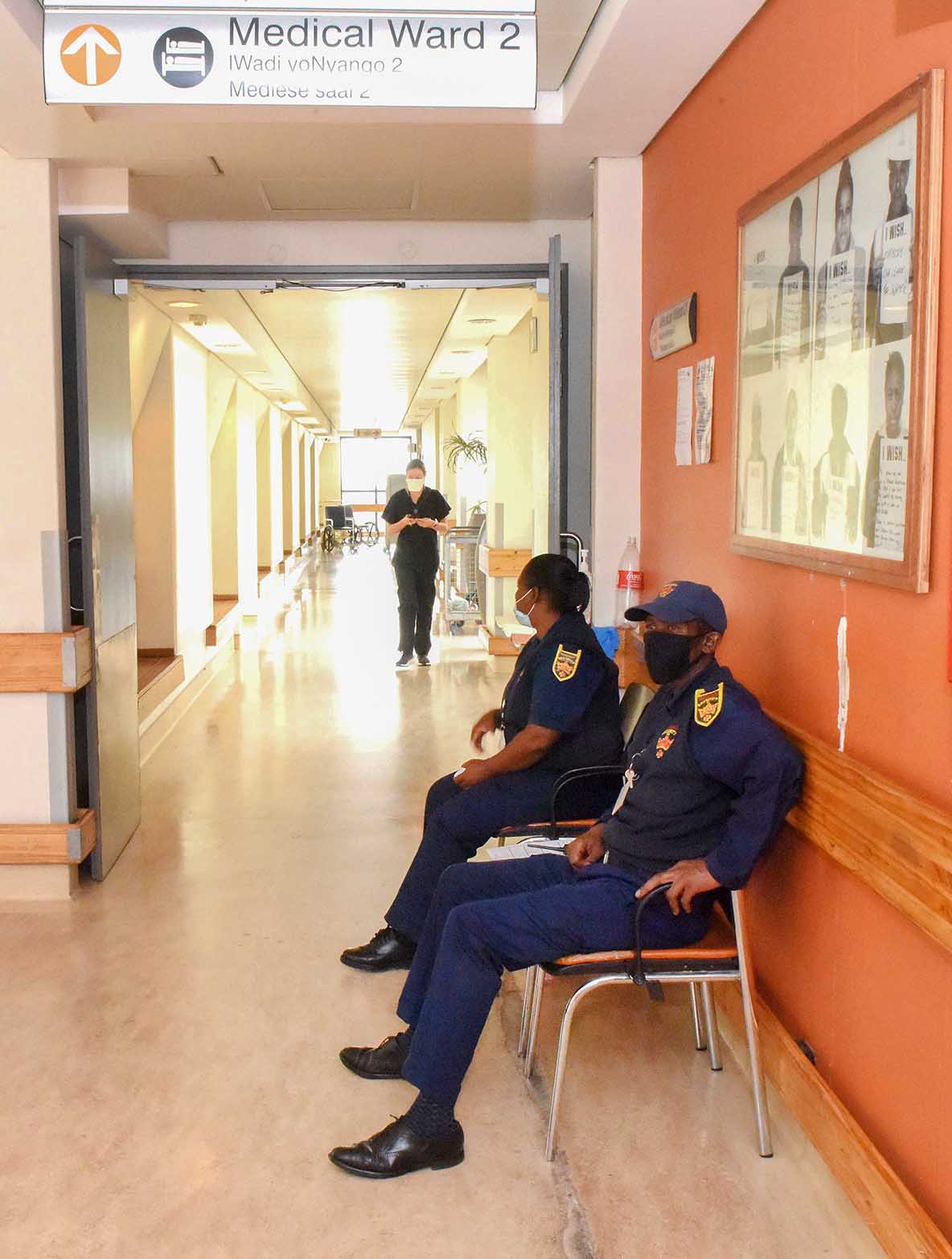
Apart from funding, high crime rates are an obstacle to attracting and retaining staff. (Photo: Nasief Manie / Spotlight)
“We are busy now with a document to the Khayelitsha Eastern substructure that details our needs, [on] how and where we will be using that additional money which we desperately need,” he says.
Responding to questions in the Western Cape parliament’s standing committee on health in February, Dr Saadiq Kariem, chief operations officer in the provincial health department, acknowledged the budget pressures. He explained that the provincial treasury allocated R114-million to fund additional services such as mental health, palliative care and surgery backlogs, not only for Khayelitsha Hospital but health facilities throughout the province.
Safety concerns
Apart from funding, high crime rates are obstacles to attracting and retaining staff. Ndibongo says people do not want to work in Khayelitsha due to crime.
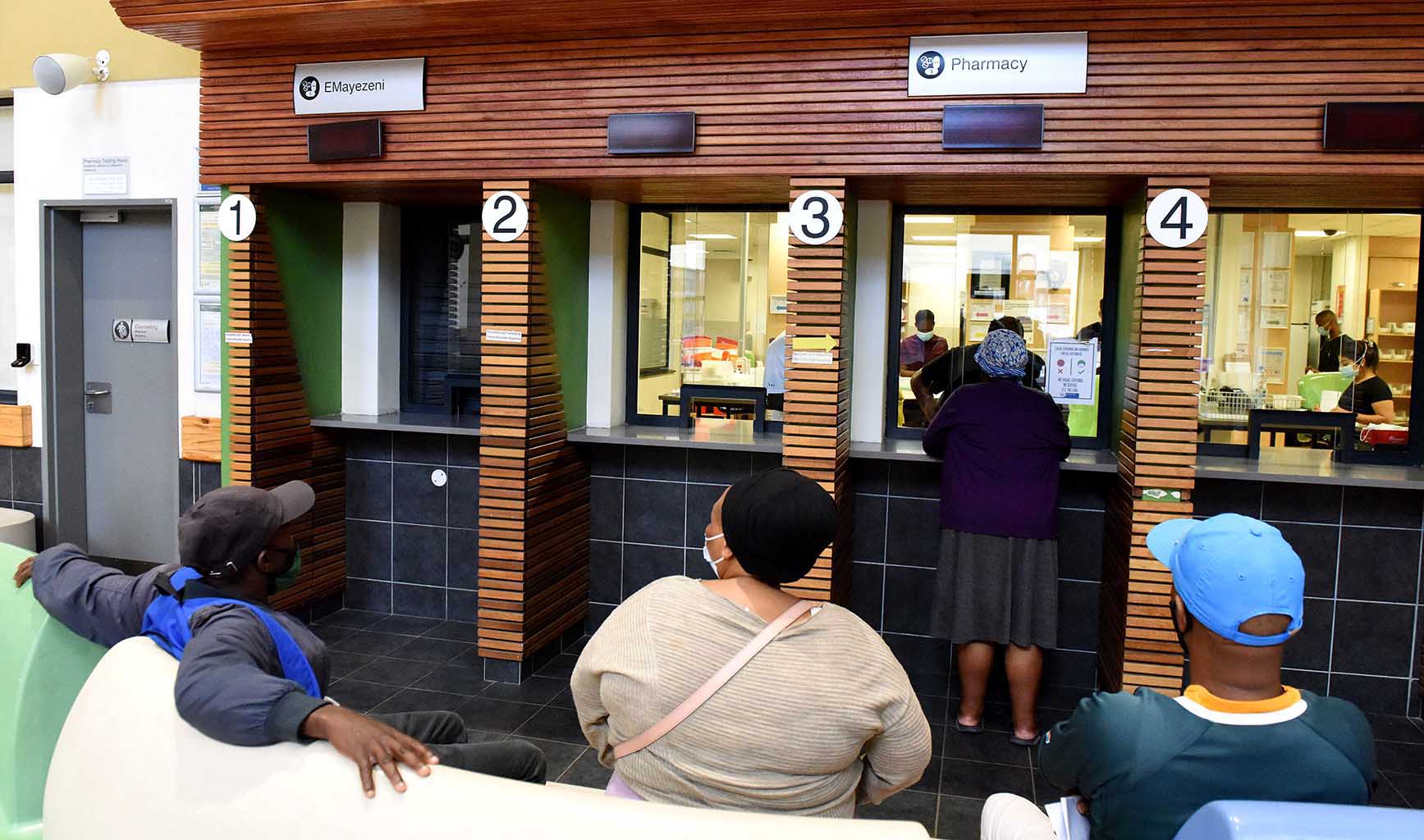
Patients wait for pharmacy services at Khayelitsha Hospital. (Photo: Nasief Manie / Spotlight)
This worries Binza, too. “Sometimes our staff members are robbed at gunpoint at bus stops or as they are coming to work, resulting in shift cancellations. Also, it’s a challenge when the residents are protesting, which means roads are closed. Sometimes cars are stoned, making it difficult to get to work.
“But we have a WhatsApp group for such things. We inform each other on which road is safe to take. When there is a protest or a staff member is robbed that means we are short of hands to do the work. This adds to the challenge as we are already short-staffed.”
Impact of Covid-19
Binza says emergency and mental healthcare services were under the most pressure from the Covid-19 pandemic.
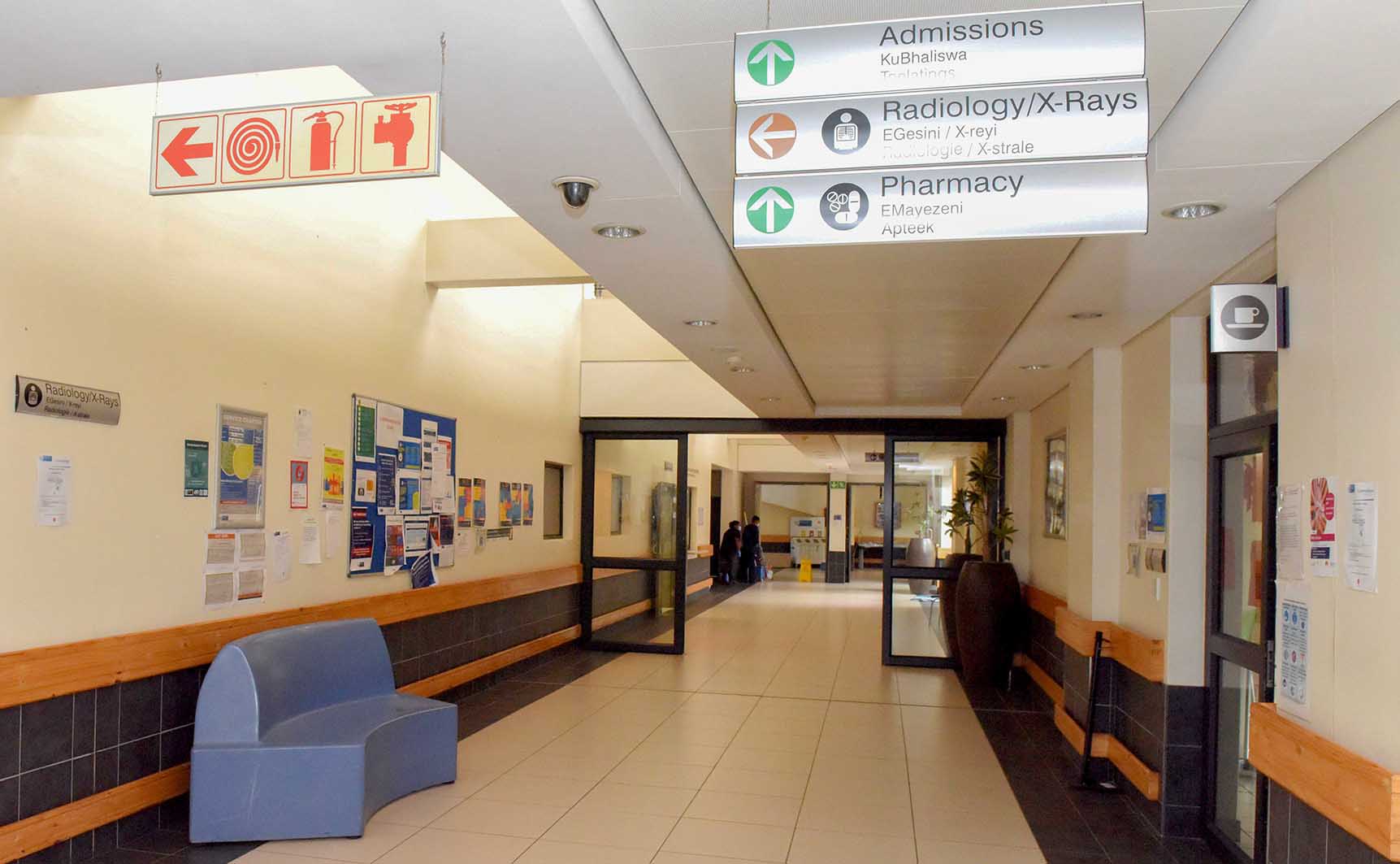
The Khayelitsha hospital corridors are spotless. (Photo: Nasief Manie / Spotlight)
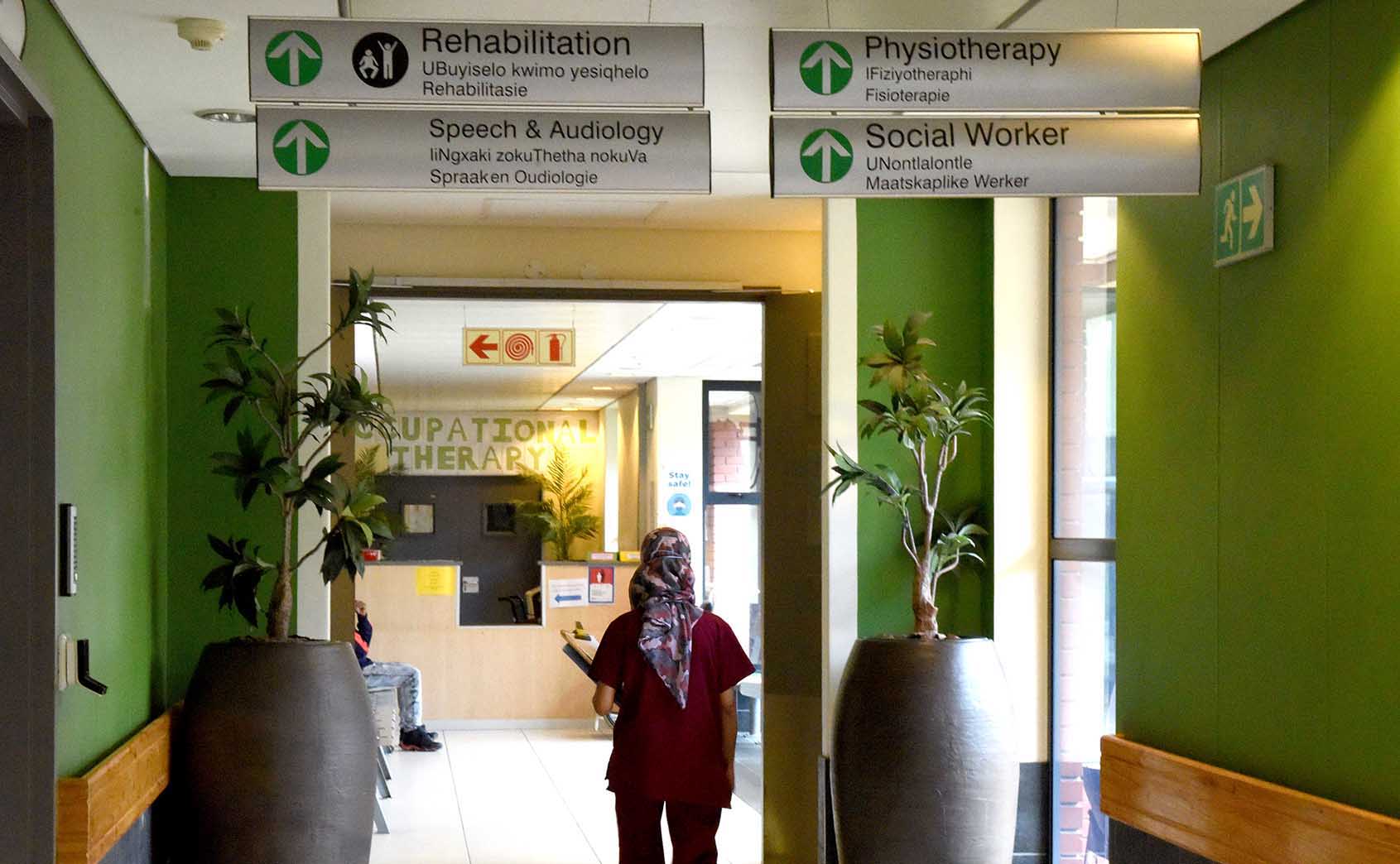
Khayelitsha Hospital is a district hospital but also provides services that could be accessed at regional level. (Photo: Nasief Manie / Spotlight)
“Mental health challenges [have] been coming for a while and just increased during the pandemic,” he says. “We know what Covid-19 has done to our people. They are frustrated that they can’t put food on the table. Some lost their jobs. We have 51 psychiatric beds which, at times, had to increase to 171. Tell me, where do we put all these people? We had to make do with what we had. The demand for psychiatry beds had taken the hospital to 140% of what it could manage with the little resources it had.”
The TAC’s Mazwayi says that when they met Binza in November 2021, he told them that psychiatry patients are supposed to be kept for observation for only 72 hours at the hospital, but they end up staying for up to 22 days, which leads to bed shortages.
Dealing with community dynamics
One of the things that they are proud of as a hospital, even in the face of the pandemic, is its death rate, which is between 2% to 4%. This, Binza says, is fairly comparable to other big hospitals that take on as many patients.
“You know, we had this death rate even during Covid-19. One of our biggest challenges when talking about death rates is actually death on arrival. We work in a community where parents or guardians believe that when a child is sick, it’s an evil spirit. So, the patient must first be taken to a sangoma to help them before coming to the hospital. The hospital becomes a last resort and in most cases these patients get to us very late or when they are dead most of the time,” he says.
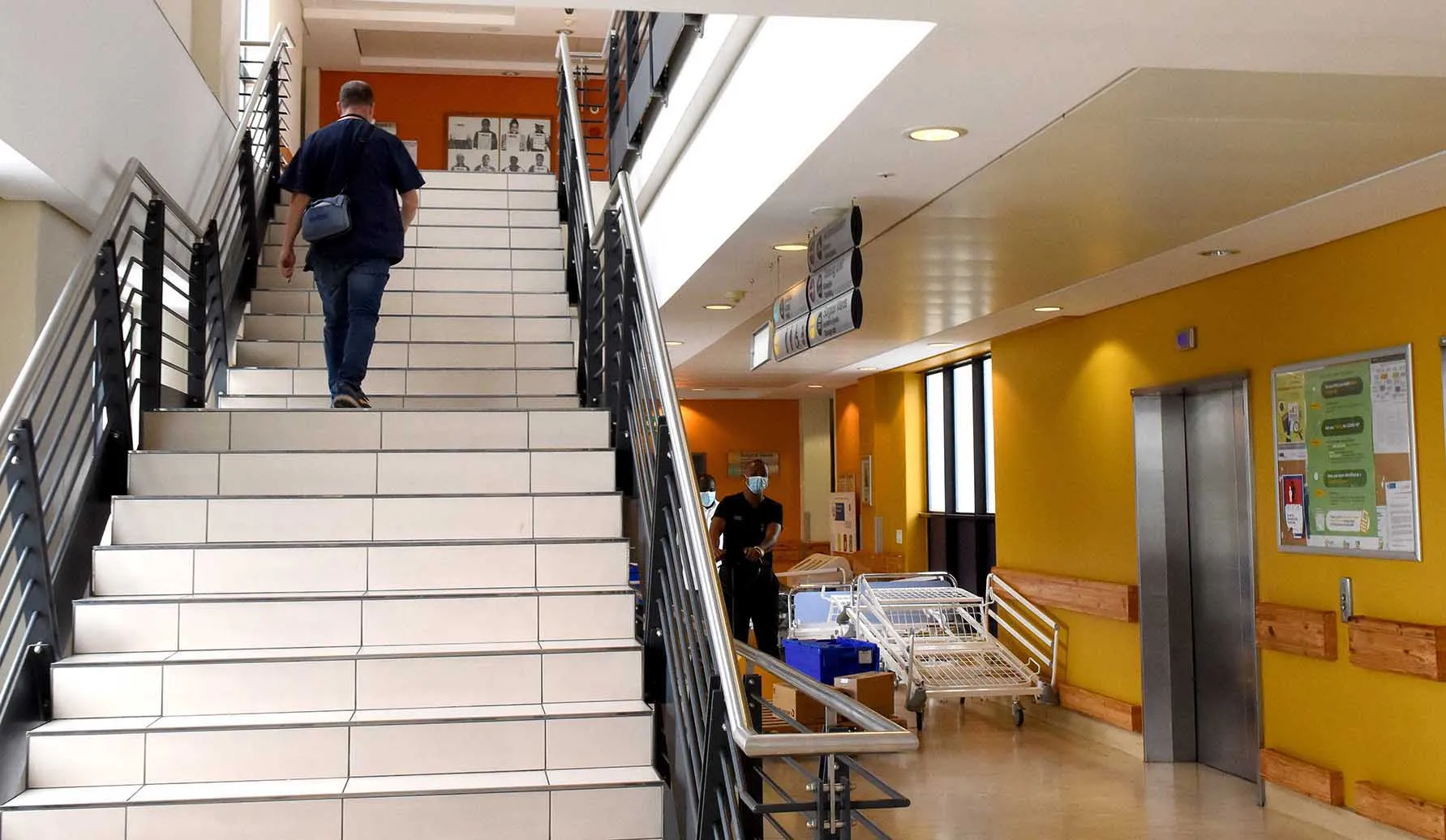
In the last financial year the Khayelitsha hospital was allocated a budget of R430-million but the CEO says for it to function optimally they need an additional R150-million. (Photo: Nasief Manie / Spotlight)
“By seeking professional healthcare late, we are denied a chance to intervene while there is still time to save the patient. This is what is actually inflating our death rate,” he says, adding that the number of people who die in hospital after being admitted is very low.
To combat this, Binza says they are enlisting all community stakeholders, including community policing forums, the Khayelitsha Development Forum, school governing bodies and traditional healers.
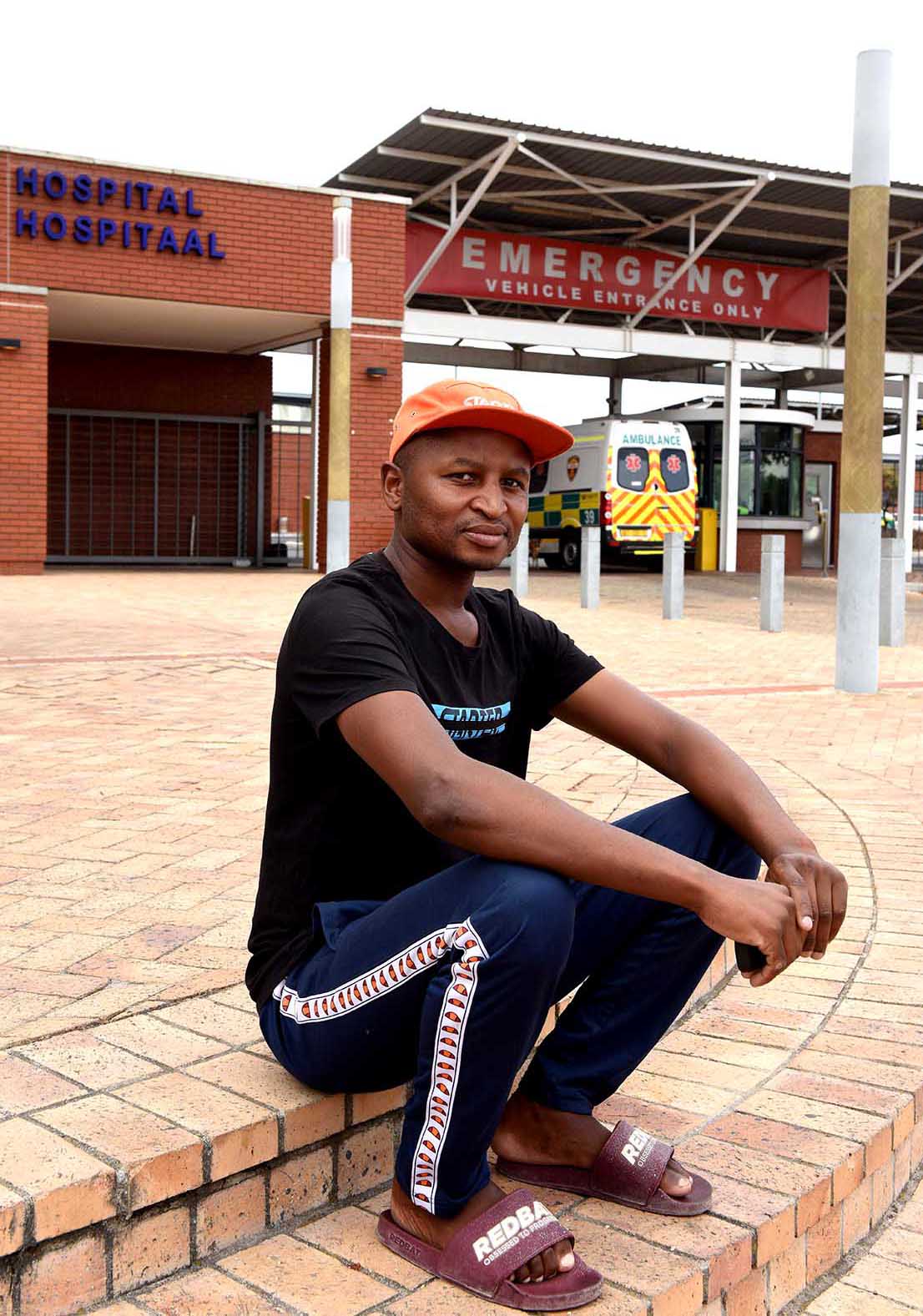
Goodman May, a Khayelitsha hospital patient from Harare. (Photo: Nasief Manie / Spotlight)
“We want the community to know that we are here to help them.” He says they often hold community health imbizos to hear their frustrations about the hospital. “We also want to tell them our frustrations so that we all work together.”
Mixed reaction
Azola Dlamini, who is 32 weeks’ pregnant, comes to the hospital for her antenatal care visits. It is a service she can get at the clinic but she prefers the hospital because it is closer. “The staff is friendly and quick.”
Another patient, Goodman May, says nurses must pay attention and love what they do. “Each time I come here it’s like some nurses are forced to be here. Some are not even sure what they are doing here, which makes you wonder if you will get the proper service. For me, the most important thing is for the nurses to be present and attend to you with full attention. This is something that I’m not getting at this hospital.”
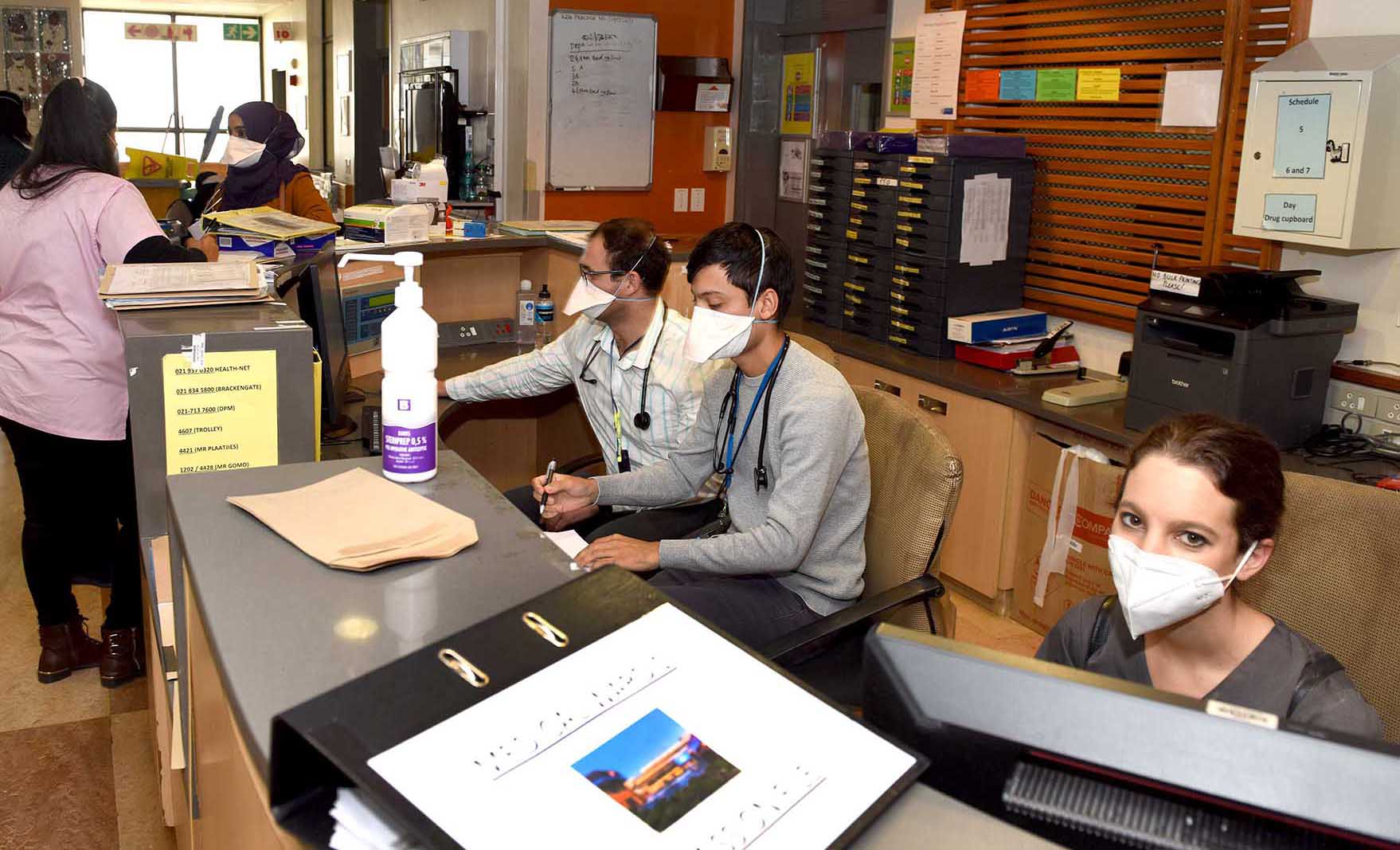
CEO David Binza says they often hold community health imbizos to hear residents’ frustrations about the hospital. ‘We also want to tell them our frustrations so that we all work together.’ (Photo: Nasief Manie / Spotlight)
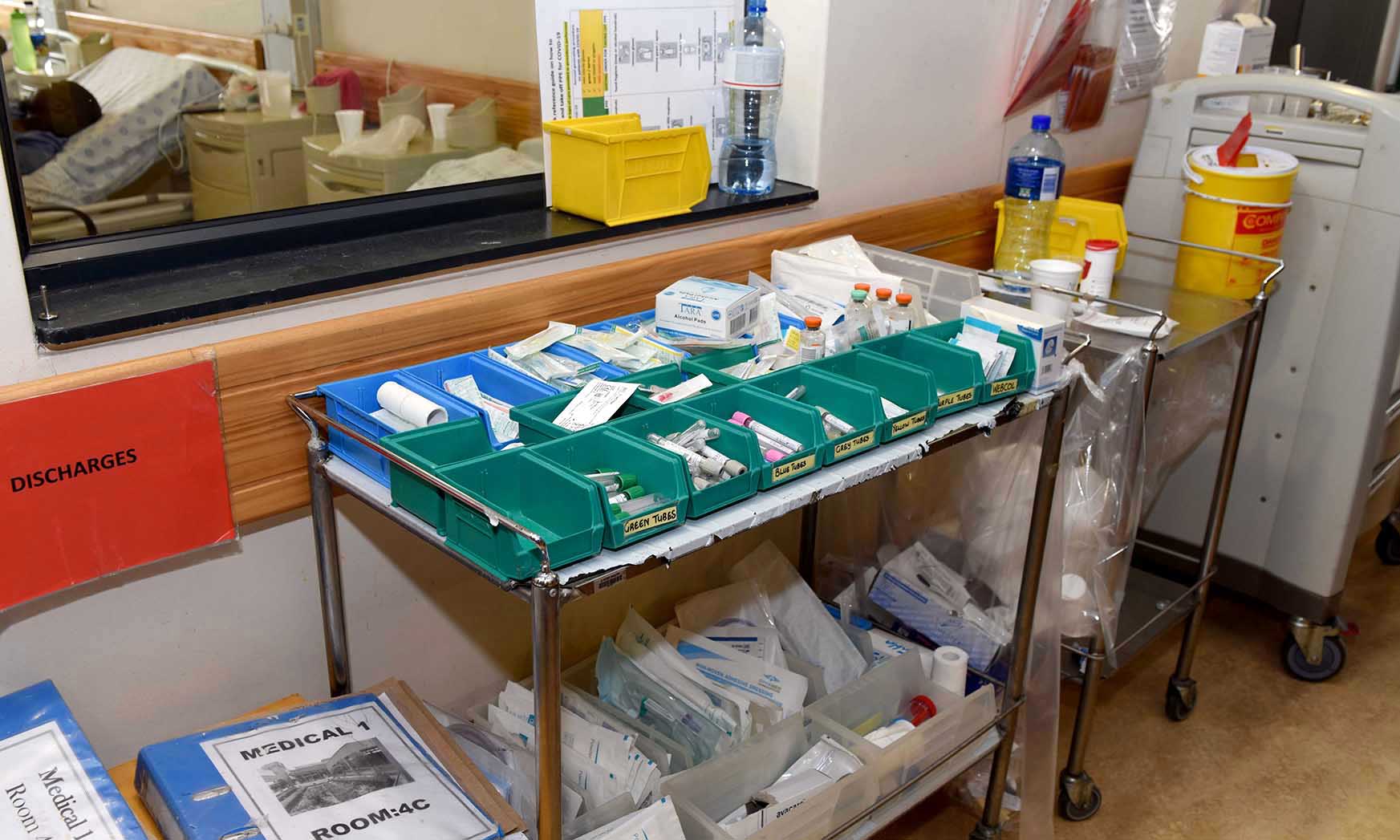
Many patients present too late at the hospital and add to the number of deaths on arrival, says Khayelitsha Hospital CEO David Binza. (Photo: Nasief Manie / Spotlight)
But, Binza says that despite various challenges they are all trying to make it work and provide the best service for patients. “Everything has to be done with respect, no question is too big or too small. We want to have those difficult conversations with the community so we can improve the service we provide to them.”
Gesturing to several awards mounted on a wall, Binza says the hospital received another clean audit for the 2018/19 financial year. “You see, this wall is a statement of the incredible work we have done, that shows we are doing something right. I must say, everyone pulls their weight. Because we don’t have enough staff, one person ends up doing the work of two or three people. With that, mistakes are bound to happen, but you know, even under so much pressure and little resources we have upheld the standard. Very few patients are dying in our hands.” DM/MC
This article was published by Spotlight – health journalism in the public interest.
[hearken id=”daily-maverick/9303″]
"Information pertaining to Covid-19, vaccines, how to control the spread of the virus and potential treatments is ever-changing. Under the South African Disaster Management Act Regulation 11(5)(c) it is prohibited to publish information through any medium with the intention to deceive people on government measures to address COVID-19. We are therefore disabling the comment section on this article in order to protect both the commenting member and ourselves from potential liability. Should you have additional information that you think we should know, please email [email protected]"






 Become an Insider
Become an Insider